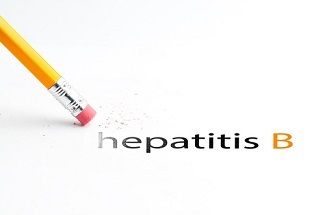Occult Hepatitis B Virus Infection: Underestimated Global Health Threat
Occult HBV infection is likely to go undetected in under-resourced regions of high HBV endemicity and confound WHO goal to eradicate the viral hepatitis by 2030.

Undetected occult hepatitis B virus (HBV) infection is likely to affect a “substantial proportion” of the populations of countries with high HBV endemicity and low testing resources, according to a recent review and meta-analysis.
“These findings suggest that the role of occult HBV infection on global elimination targets might be underestimated, especially in low-income and middle income countries where HBV DNA measurement remains largely inaccessible, leading to undiagnosed occult HBV infection cases,” say Yu Ri Im, MBBChir, Section of Hepatology, Division of Digestive Diseases, Department of Metabolism, Digestion and Reproduction, Imperial College London, London, UK, and colleagues.
HBV infection is characterized as occult when replication-competent HBV DNA in the liver does not provoke a positive test for the HB surface antigen (HBsAg) serological marker of the infection. Occult HBV corresponds to a natural stage of the infection, when HBV DNA has low replicative activity, gene expression, and virion production.
Although the clinical relevance of occult HBV is debated, Im and colleagues cite increasing evidence of its association with advanced chronic liver disease, particularly hepatocellular carcinoma; and with increased transmission of HBV infection, including through blood donations.
To gauge global and regional prevalence of occult HBV from general population studies, and the prevalence in subgroups defined in studies; and to discern whether the estimates vary with methods used to detect infection, the investigators conducted a systematic review and meta-analysis of 305 articles comprising 375 distinct studies involving over 140 million individuals who were HBsAg negative and tested for HBV DNA.
Im and colleagues found only 2 studies, however, that evaluated occult HBV infection in general populations, precluding their own estimates of global and regional prevalence. Among blood donors, occult HBV generally mirrored HBV endemicity: 0.6% (95% CI 0.00-0.26) in low-endemicity countries, 0.12% (0.04-0.23) in intermediate endemicity, and 0.98% (0.44-1.72) in high endemicity countries.In high-risk groups (eg, with HIV, HCV, or on hemodialysis) the prevalence of occult HBV appeared to be substantial irrespective of endemicity: 5.5% (2.9-8.7), 5.2% (2.5-8.6), and 12.0% (3.4-24.7), respectively.
With molecular testing for HBV DNA relatively unavailable in under-resourced but highly affected regions, Im and colleagues assessed whether the total hepatitis B core antibody (anti-HBc) could be a low-cost, and more accurate serological test than the HBsAG.In the subgroup analysis, occult HBV prevalence was less than 0.1% in studies targeting HBsAg-negative persons irrespective of anti-HBc serostatus, and 9.9% (7.9-12.2) with populations exclusively HBsAg-negative and anti-HBC positive.
Although anti-HBc positive appeared an important risk factor for occult HBV infection, the investigators note that its pooled sensitivity of 77% and specificity of 76% would not allow for consistent distinguishing between those with occult or another stage of HBV infection. They call for additional population-based serosurveys on occult HBV, and urge that plans to address HBV consider occult infection as a global health issue.
In an accompanying editorial, Teresa Pollicino, MD, Laboratory of Molecular Hepatology, Department of Human Pathology, University Hospital G Martino of Messina, Messina, Italy, concurred with the need to increase availability of molecular testing, and for an accurate and low cost alternative test to uncover occult HBV infection.
“These data indicate that many individuals who are HBsAG-positive might remain unidentified by the most widely used and less-sensitive assays,” she remarked. She also agreed with Im and colleagues finding that occult HBV infection, “is an underestimated and under-evaluated condition.”
